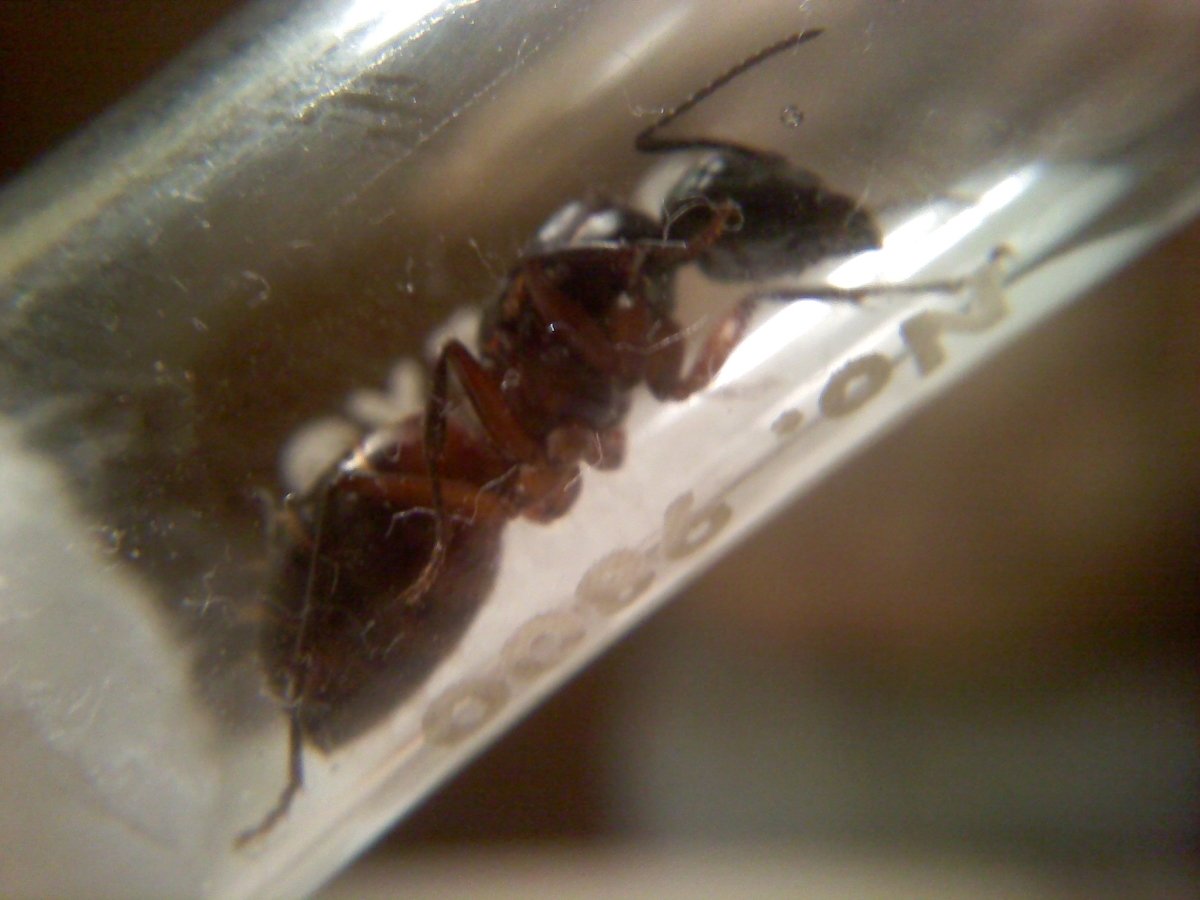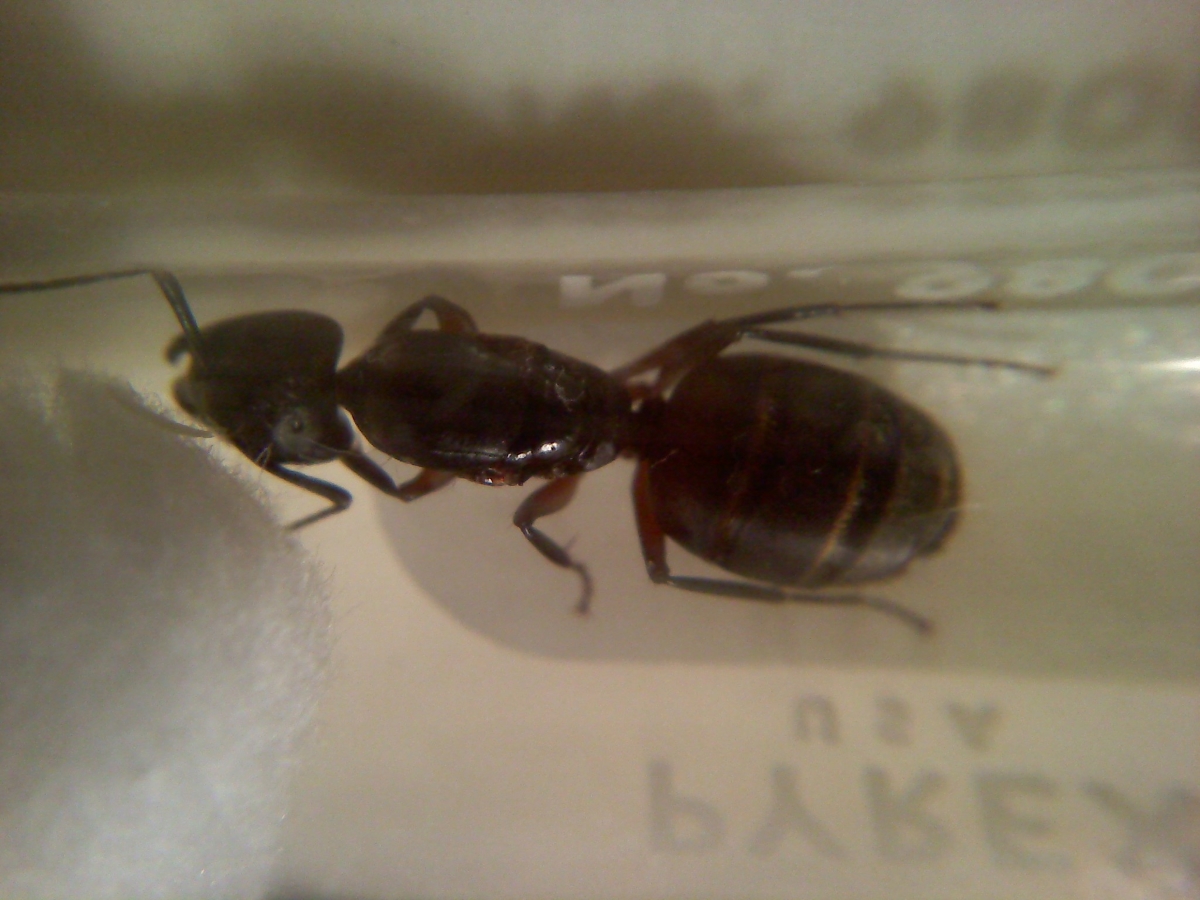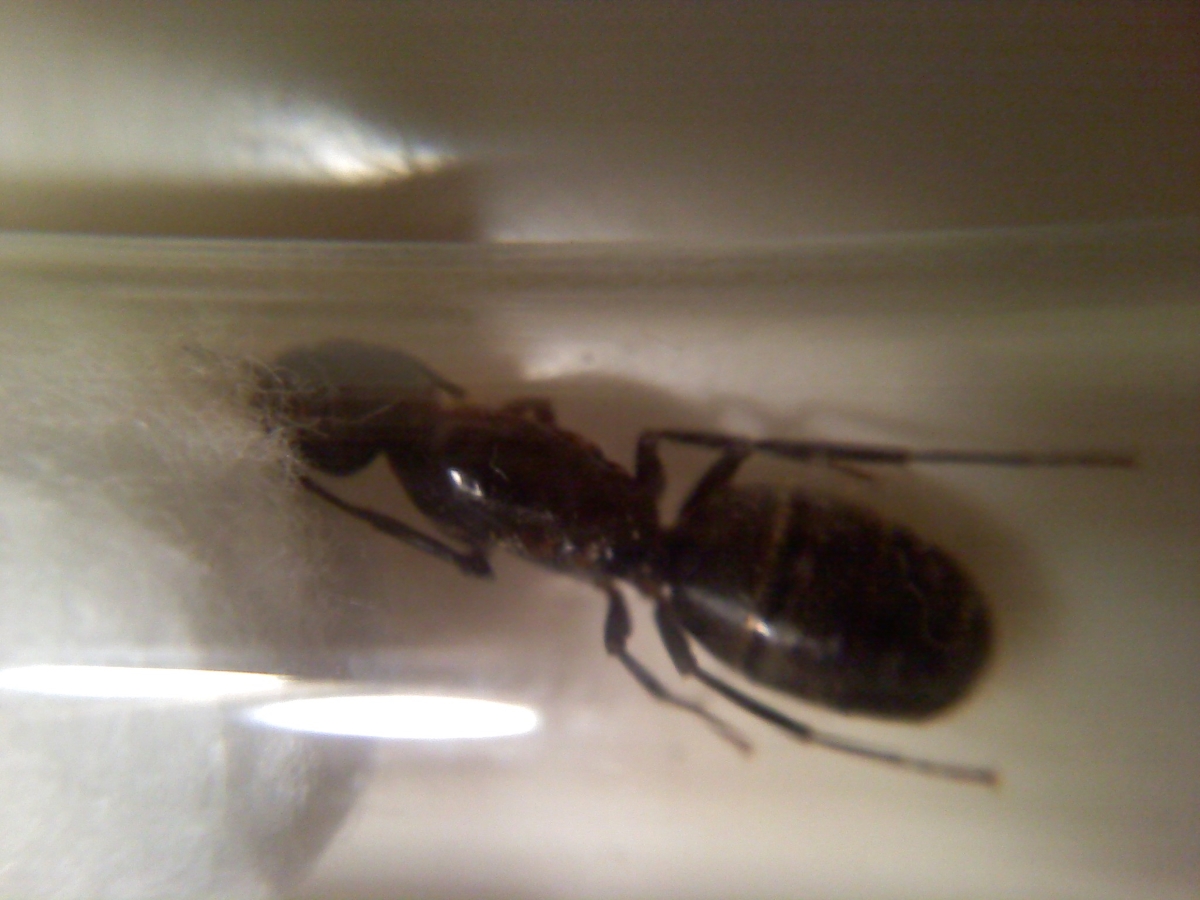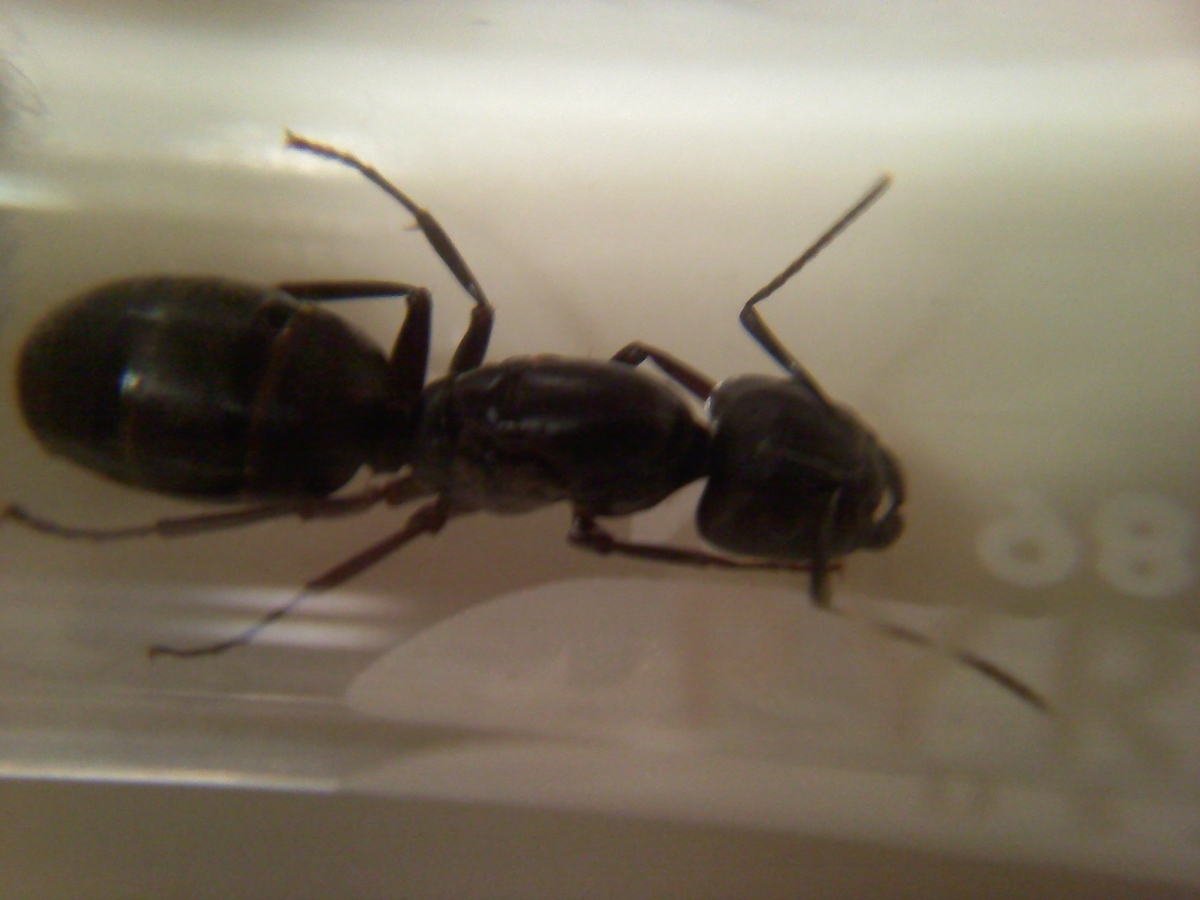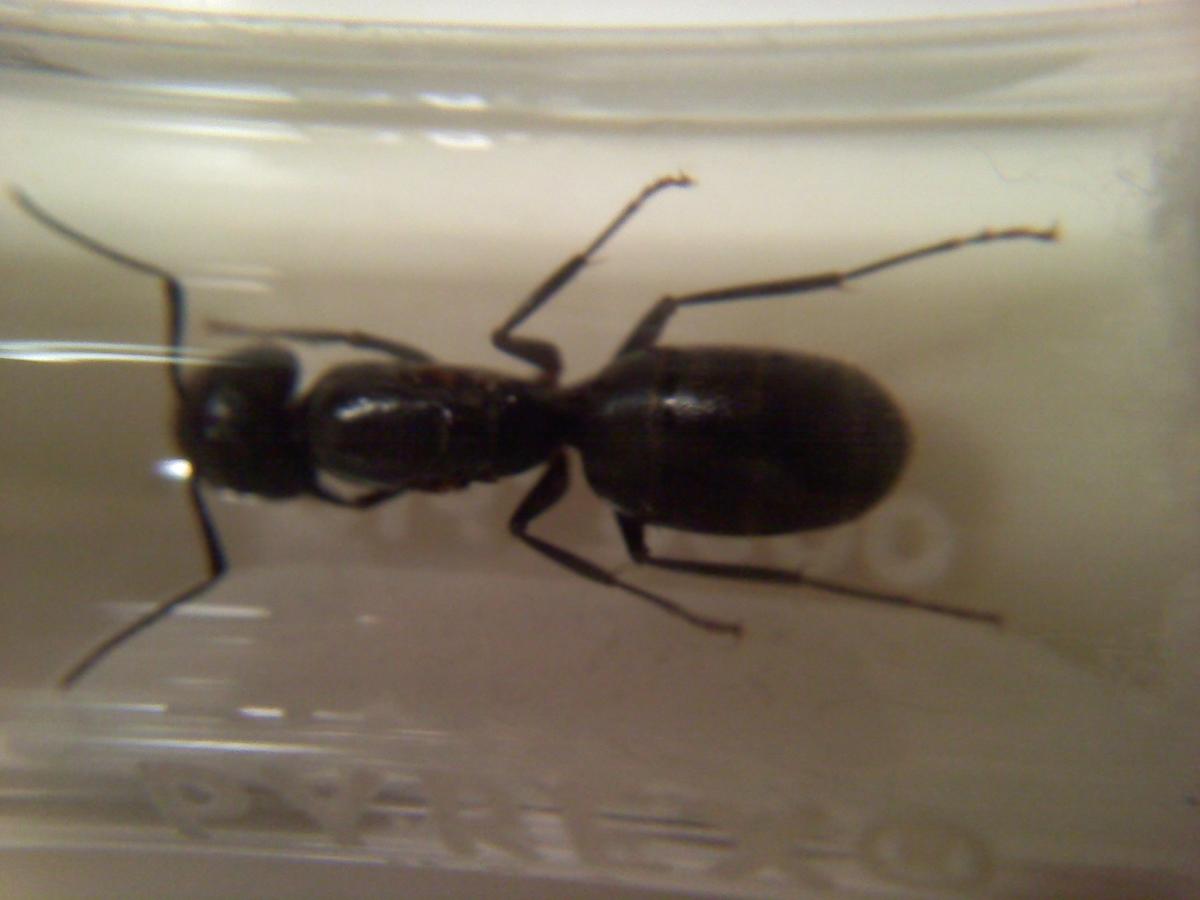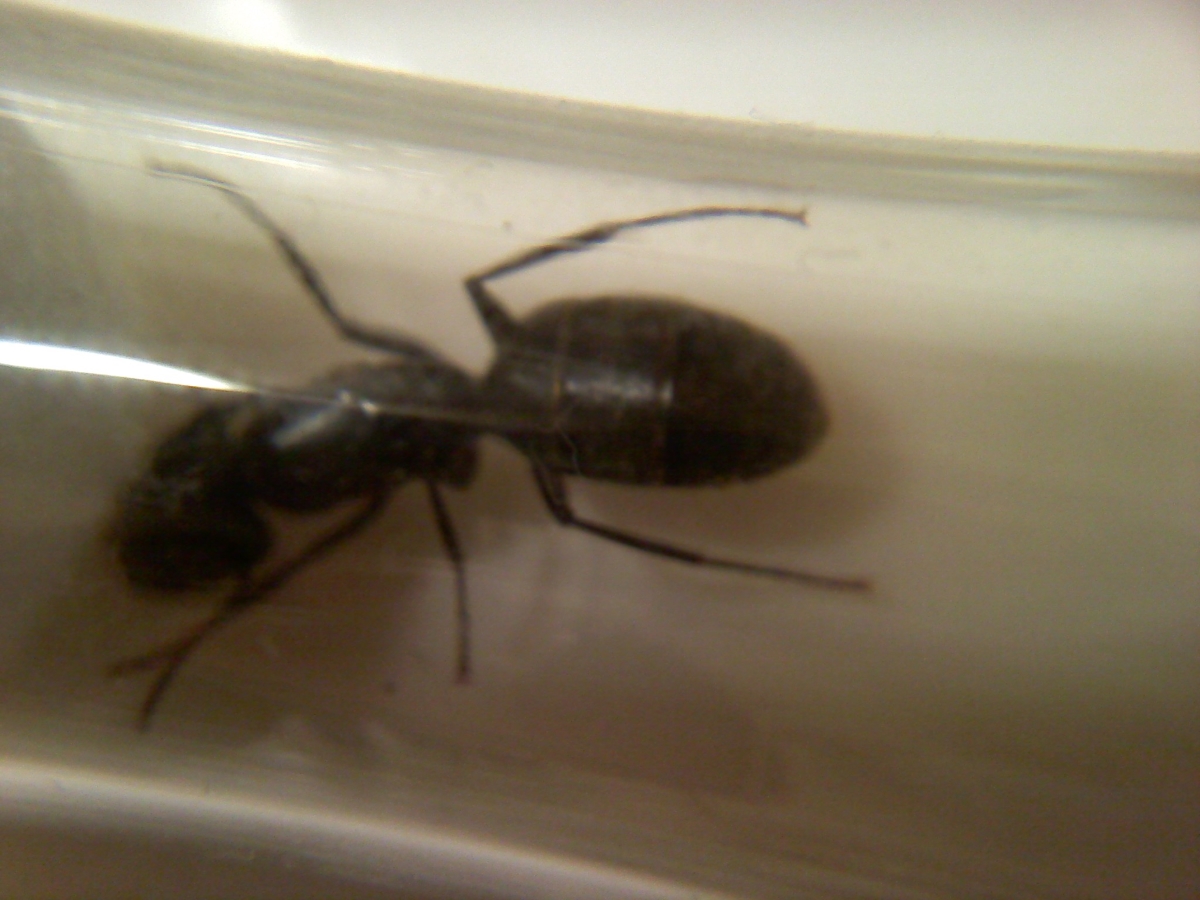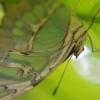1. Caught a little south of St. Louis in a public park.
2. 4/13/17
3. She was hiding under a small chunk of wood that was sitting in the grass. The area is lightly forested, but there are some thicker woods a few hundred feet away.
4. She's about 17mm long.
5. She's mostly black with a caramel color on the underside of her mesosoma and at the base of her legs. Her gaster is slightly hairy with a little shine to it.
I'm thinking she's a Camponotus pennsylvanicus queen, but I'd still appreciate some second opinions.
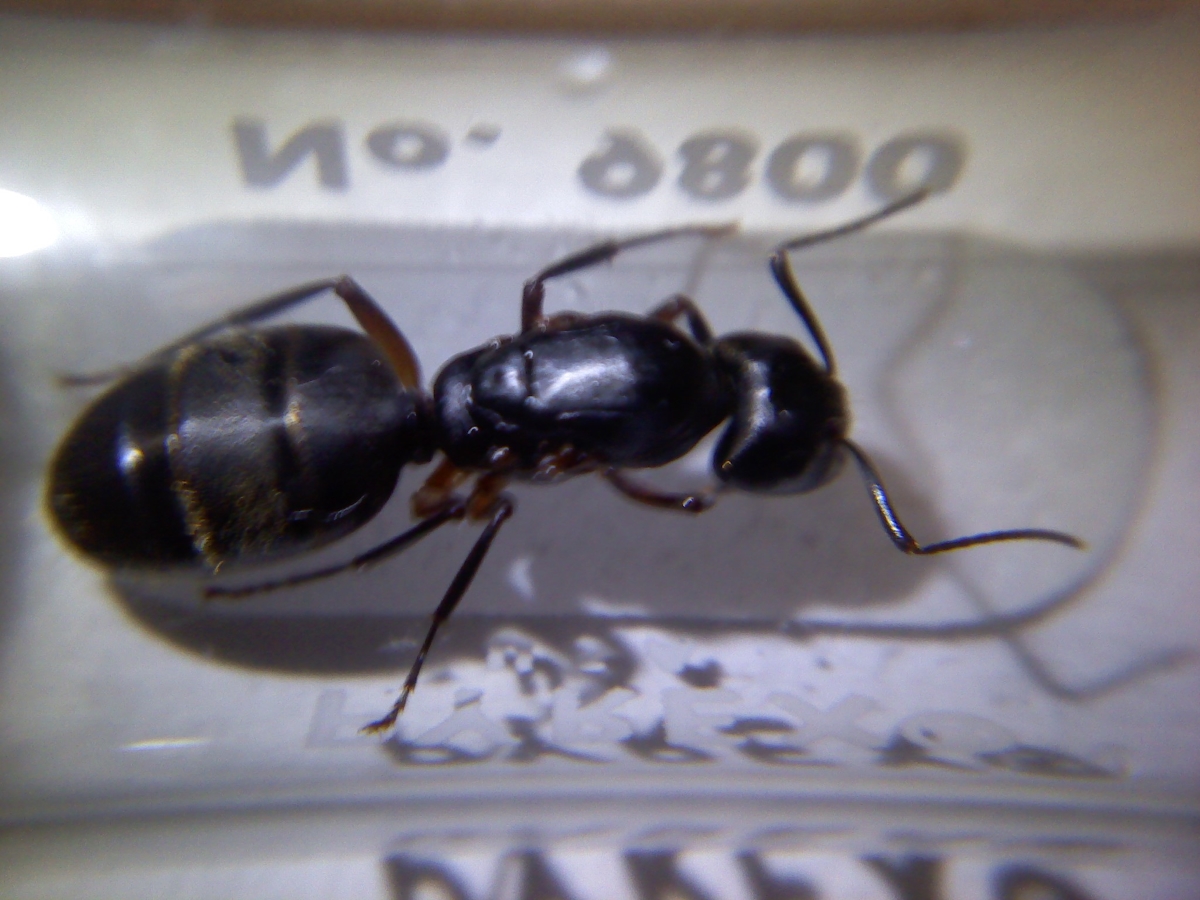
Edited by BMM, April 13 2017 - 2:10 PM.






